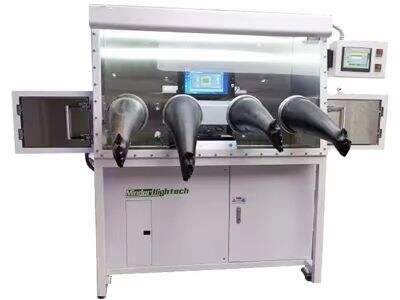Semiconductor devices and equipment are an integral part of many of the electronics products that we use on a daily basis like our smartphones, computers and cars. These devices are little and often quite complex, requiring a great deal of precision to manufacture. Leak detection, or checking for leaks, is a very important step in the creation of these devices. This process assists to make sure that the devices and tools have no leaks. If leaks do appear it causes errors and a degradation in device performance.
What Is Leak Detection in Semiconductor Manufacturing?
Leak detection involves identifying and locating leaks in semiconductor devices and equipment. A leak is when there is some type of damage or defect in the device or Manual wire bonder equipment that causes air or gas to escape. If a leak occurs, it could affect the performance of the set or equipment and, in certain instances, it could even result in the device breaking down entirely. To ensure leaks do not happen, manufacturers employ various techniques to inspect for potential issues and correct them at an early stage before major problems develop.
Common Leak Detection Methods for Semiconductor Equipment: A Comparison
There are several methods used to detect leaks in semiconductor manufacturing. These approaches contribute to helium mass spectrometry and pressure decay testing, bubble test.
Helium mass spectrometry is a particularly sensitive leak testing, where using helium gas is able to detect even small leaks. It is an extremely accurate method, but one that necessitates specialized tools and training in order to properly implement.
Another method that measures pressure changes in a sealed container is pressure decay testing. If there is a leak, the pressure will change, and that will tell you there is a problem. In this way, the method is quite easy to follow, but it may not detect super small leaks.
One of the simplest and most effective methods to check for leaks is bubble testing. This method uses a solution of soap and water rubbed on the device’s surface. If the process is leaking, bubbles will form at the point of the air or gas escape. This method is very simple to do and does not require specialized equipment but may not be as precise as the other methods.
All of these methods have their advantages and disadvantages. Helium mass spectrometry, for instance, can pick up tiny leaks, but it required costly Wire bonding test machinery and trained personnel. Testing for pressure decay is straightforward but can miss very small leaks. Bubble testing is simple and fast, but may not provide the most accurate results. Due to these differences, manufacturers must consider which method will best suit their unique needs and circumstances.
Title: Effective Leak Detection Techniques for Uptime and Yield Optimization
In semiconductor manufacturing, efficient leak detection is crucial to ensure the flawless operation of processes. This helps prevent devices and equipment from breaking down as manufacturers are able to detect and repair leaks quickly. This saves time and also less product goes to waste. The number of failures are less and so is the waste, which makes manufacturing process much more efficient. For manufacturers, this means better success by tackling the ability to create more devices, for a smaller investment.
The Role of Leak Detection in High-Performance Semiconductor Manufacturing
Even the smallest leaks can be catastrophic in high-performance semiconductor manufacturing. The devices and IT equipment protect themselves from dust and dirt while the air leakage helps air get out from inside. This contamination causes pressure and temperature to fluctuate, impacting how well you set it up. This makes leak detection a top priority for manufacturers. Focusing on this process, they ensure that their products match well and work well. It's important to ensure that everything works as they expect it to, gives them confidence that they can use these devices for their own needs.
Integration Advances in Semiconductor Devices and Equipment
Detecting leakages is an example wherein leak detection can improve as the Battery welder devices and equipment become increasingly complex and advanced. Their manufacturers are also exploring emerging technologies and techniques to improve the leak detection solution. For instance, they’re innovating laser-based systems and microfluidics to detect leaks more accurately and efficiently. It's a promising step forward on better leak detection in semiconductor manufacturing.
Minder-Hightech specializes in leak detection solutions for asparagus semiconductor manufacturing. We understand the challenges and opportunities in this industry inside out. Trained on data till October 2023 At (your company name), we create innovative tools and approaches to help manufacturers operate better, more reliably, and more successfully. We continue to innovate and grow through continual research, development, and improvement. Since then, we have always strived to deliver optimal solutions for our customers, in line with their requirements to manufacture their products within About our Company priser.

 EN
EN
 AR
AR
 BG
BG
 CS
CS
 DA
DA
 NL
NL
 FI
FI
 FR
FR
 DE
DE
 EL
EL
 IT
IT
 KO
KO
 NO
NO
 PL
PL
 PT
PT
 RO
RO
 RU
RU
 ES
ES
 SV
SV
 TL
TL
 IW
IW
 ID
ID
 LT
LT
 SR
SR
 SL
SL
 UK
UK
 VI
VI
 ET
ET
 HU
HU
 TH
TH
 TR
TR
 FA
FA
 AF
AF
 MS
MS
 GA
GA
 IS
IS
 HY
HY
 AZ
AZ
 KA
KA
/images/share.png)






